Is fish a meat? All things you should know

Hello readers, welcome to our new info article. Here, we will discuss about Fish & meat. This question arises in the minds of almost all of us. If this question comes to your mind, then you will love it.
Here, I will explore Fish and meat, scientific reasons, religious dogma, etc.
You will find your answer easily after reading this article.
So, without further delay, let’s dive in…
Table of Contents
Introduction
To address this debate, we have to know clearly what meat is. Can fish fullfil the cliteria.
Meat definition: We know meat is the flesh of an animal. Especially mammals and birds that are consumed as food.
Such as cows, pigs, chickens, and turkeys, among others. Meat fulfils essential human needs for protein.
Protein is the central part of meat. Meat has water; up to 60 to 75 % is weight. Meat also contains fat, vitamins and various minerals.
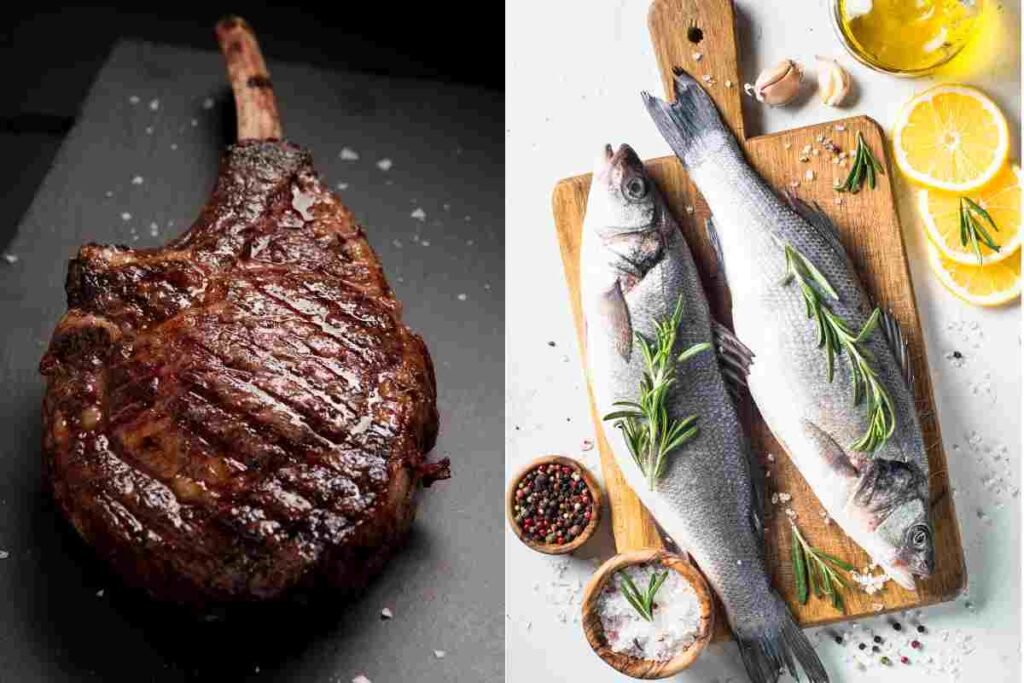
Fish definition: Fish is an aquatic plant, which is a vertebrate animal.
Fish is widely consumed around the world as a food . From tilapia to salmon, tuna to cod, it is a staple food in many cultures.
They are valued for their taste, texture and nutritional benefits.
Yet, the debate arises from the fact that Fish belong to a distinct biological category from land animals commonly regarded as meat.
Fish is Meat or not
According to many people, Fish is meat. Because it fulfils our protein needs. Many people think that only animals that live on land are included in the meat.
Because, Fish live in water, it does not include meat. But here we have presented some reasons and arguments:
Culinary Perspective:
Culinarily: Yes, Fish Considered as a Meat.
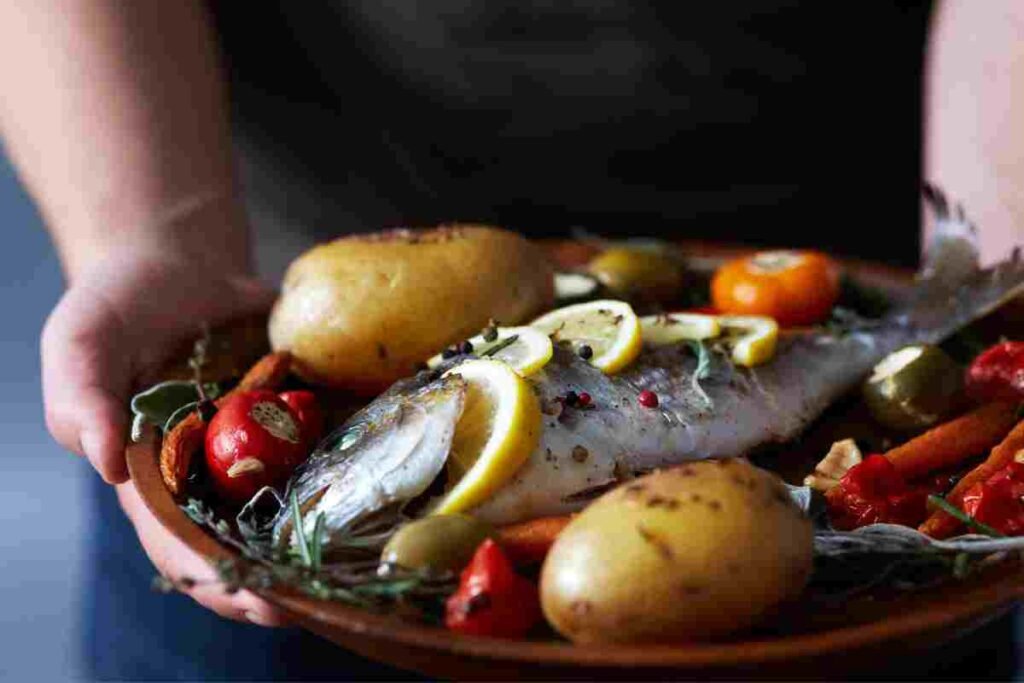
In many culinary traditions, Fish can usually be combined with meat. Because it is a source of protein, it needs to be cooked like meat.
From this point of view, Fish contributes to our diet, like meat; Fish is generally regarded as meat.
Scientific Perspective:
Scientifically: Yes, Fish is Meat.

Scientifically, fish is full fill of all that needs to become meat.
Meat is primarily composed of protein, water, and fat, like meat.
The edible portions of Fish are made of muscle tissue, just like the meat from land animals.
Religious Dogma:
Whether or not Fish is considered meat depends on cultural, religious and dietary considerations. Many religions and traditions have specific guidelines about what can.
It cannot be eaten, especially when it comes to meat. These may vary between religions and groups.

Christianity: In Roman Catholicism, traditionally, Fish is not considered meat. Abstaining from meat on Fridays (especially during Lent) is often replaced by Fish.
Which is very popular. However, some individuals and communities within Christianity have different dietary guidelines.
Islam: In Islam, Fish and meat are made halal. Muslims can eat it. However, in the case of meat, there are specific slaughtering methods.
Certain types of meat (such as pork) are prohibited.
Judaism: Fish is considered pareve in Judaism. Which means it’s not dairy or meat. Jews include vegetarians as well as Fish in the Keshar diet, except for meat.
However, the type of Fish permitted and the method of preparation vary.
Hinduism: Many Hindus are vegetarians or lacto-vegetarians, altogether avoiding Fish and meat. However, many Hindus eat Fish and other types of meat.
Their regional customs depend on individual beliefs, resulting in many variations in their diet.
Buddhism: Buddhism follows specific traditions and culture. Some Buddhists show non-violence and compassion towards all living beings.
As a result, they stay away from all Fish and meat. Others may include Fish and meat in their diet.
Other religions: Other religions have dietary guidelines and prohibitions regarding Fish and meat.
For example, Sikhism prohibits eating religiously slaughtered meat. However, there is a different opinion regarding whether Fish falls under it.
Culture Perspective:
Culturally: IT DEPENDS

In cultures where fishing is a significant economic activity, coastal regions rely heavily on seafood.
Fish may hold cultural significance as a primary source of protein and sustenance. In such contexts, Fish is typically regarded as a type of meat.
But it may sometimes depend due to different religions, castes and traditions.
Perspective of Diet:
Dietary Restrictions: VARIABLE
When people refer to “meat” in the context of diet, they typically include flesh obtained from animals such as mammals (beef, pork, lamb) and birds (chicken, turkey, duck).
Fish, an aquatic animal, is also considered meat in this context.
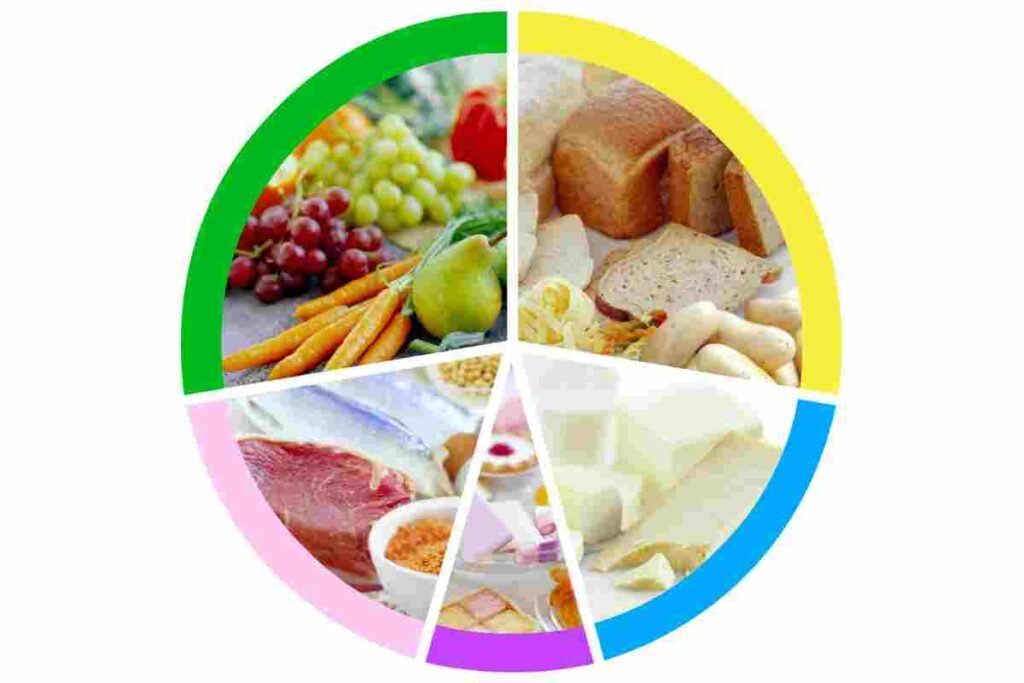
From a nutritional standpoint, Fish is often valued for its high-quality protein, omega-3 fatty acids, vitamins, and minerals, making it an essential component of many diets worldwide.
Whether someone includes Fish in their diet depends on various factors, including personal preferences, cultural practices, ethical beliefs, and health considerations.
However, when discussing dietary choices and recommendations, Fish is generally grouped under the meat category.
Comparison
Here is a comparison of meat (usually referring to the meat of mammals or birds) and Fish from various aspects:
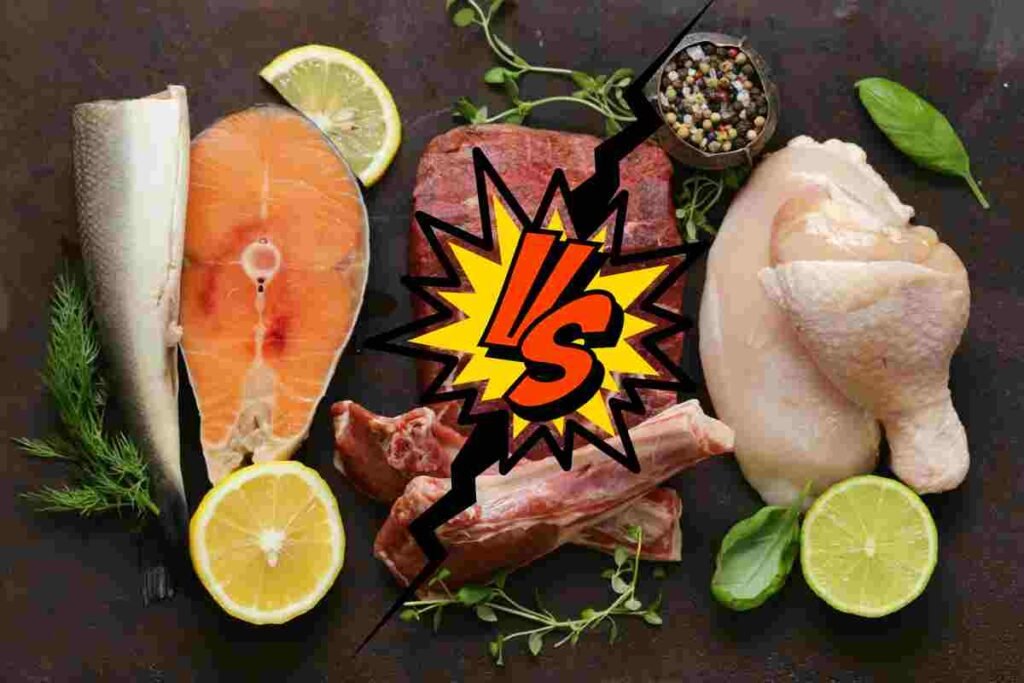
Adobe:
– Meat: Usually, we get meat from animals that live on land.
– Fish: Fish is an aquatic animal.
Source:
– Meat: derived from the meat of cattle (beef), pigs (pork), sheep (lamb), and poultry (chicken, turkey, duck).
– Fish: Fish comes from aquatic animals, including various species such as salmon, tuna, cod, tilapia, and trout.
Nutritional Composition
– Meat: usually rich in protein, vitamins (such as B vitamins such as B12), minerals (such as iron and zinc), and fat (content depends on the type of meat).
– Fish: also a good source of protein. Fish is rich in omega-3 fatty acids, vitamins (such as vitamin D), and minerals (such as iodine and selenium).
Fat Content :
– Meat: The fat content of meat varies depending on the type and cut. Some meats, such as beef and pork, can be high in saturated fat.
– Fish: Fish often contain healthy fats, especially omega-3 fatty acids, linked to various health benefits, including heart health.
Cooking Uses:
– Meat: A versatile ingredient in many dishes, including steaks, stews, burgers, sausages and various ethnic cuisines.
– Fish: Also versatile, used in grilled fillets, sushi, sashimi, fish tacos, fish soups and curries.
Environmental Impact:
– Meat: Livestock farming, especially industrial-scale operations, can have significant environmental impacts, including deforestation, greenhouse gas emissions, water pollution and habitat destruction.
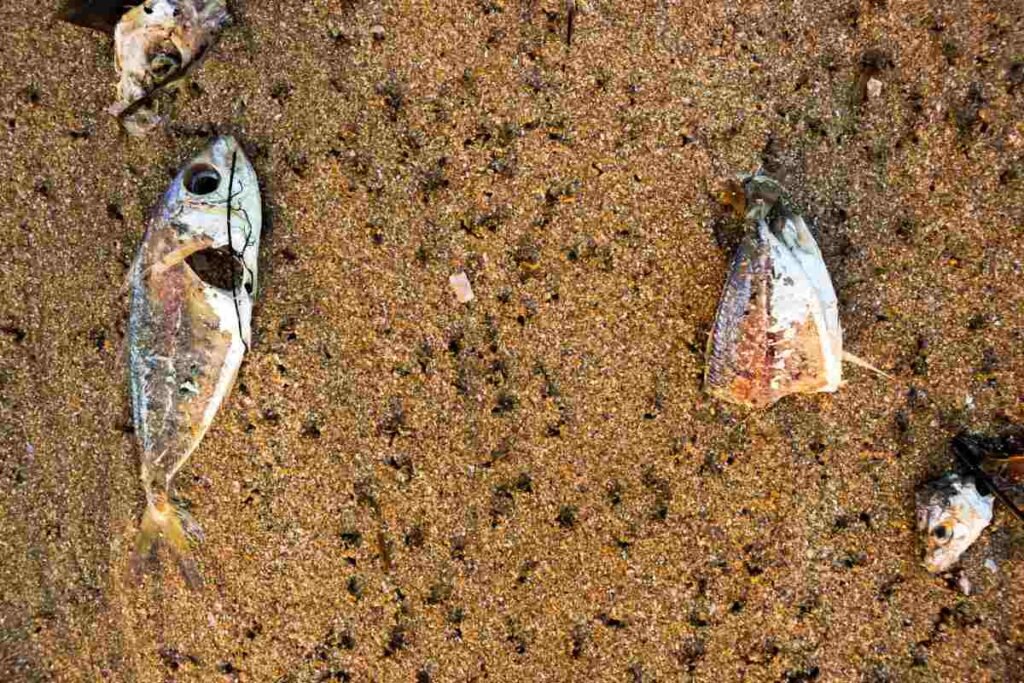
– Fish: Sustainable fishing practices are crucial to maintaining fish populations and ecosystems. Overfishing, habitat destruction and bycatch are significant concerns in the fishing industry.
Cultural & religious significance
– Meat: holds cultural significance in many societies and is often a central component of traditional meals, rituals and celebrations.
– Fish: Fish has cultural and religious importance in various coastal communities and societies with fishing traditions. In some cultures, it may also have specific roles in religious observances or dietary habits.
Health Considerations:
– Meat: Consumption of red and processed meat has been linked to health risks. Such as cardiovascular disease and some cancers when consumed in excess.
– Fish: Regular consumption of Fish, especially fatty Fish such as salmon and mackerel, is associated with several health benefits, including reduced risk of heart disease and improved cognitive function.
In summary, meat and Fish are valuable sources of protein and nutrients. Their nutritional composition, culinary uses, environmental impact, and cultural significance differ.
Including meat and Fish in a balanced diet can contribute to overall health and well-being.
However, shelf life, cooking method, and portion size are essential for optimal health outcomes.
Benefits Of Fish
High-quality protein: promotes muscle growth and repair.
Omega-3 Fatty Acids: Improves heart, brain and eye health.
Vitamins and Minerals: Vitamins D and B, as well as vitamins and minerals like iodine and selenium, are provided.
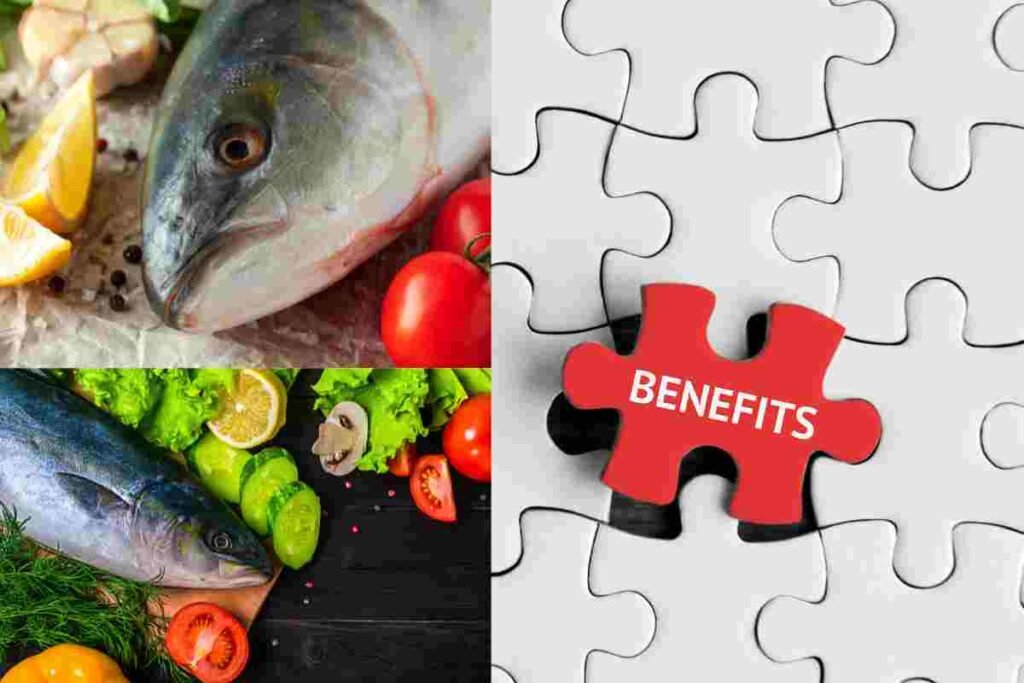
Heart Health: Reduces the risk of heart disease and stroke.
Weight Management: Low in calories and saturated fat, helps in weight management.
Disease Prevention: Reduces the risk of type 2 diabetes and certain cancers.
Mood and mental health: Omega-3 can improve mood and reduce symptoms of depression.
Regularly including Fish in your diet can contribute to overall health and wellness.
risk to consuming fish
Below are some brief possible risks of eating Fish:
Mercury contamination: Some fish, such as sharks and certain types of tuna, contain high levels of mercury. Which can damage the nervous system, especially in young children and pregnant women.

Environmental Contaminants: Fish may contain contaminants such as PCBs and pesticides, especially in farmed or polluted waters.
Allergies: Some people may be allergic or sensitive to certain types of Fish, causing mild to severe reactions.
Parasitic Infections: Eating raw or undercooked Fish can lead to parasitic infections, which can cause stomach problems.
Sustainability: Overfishing and unsustainable practices can damage fish populations and marine ecosystems.
By being aware of these risks and making informed choices, you can minimize potential harm and enjoy the benefits of eating Fish.
Conclusion
In many cultural contexts, Fish is considered meat. However, regional customs may vary based on dietary or religious beliefs.
It must be admitted that meat and Fish are essential food.
For more query please check this video.
So, What do you think about our writing?
Now I want to hear from you.
Did we miss something in our writing, or do you think fish is a meat or not?
Let me know by commenting below.
If you more interested about fish & fishing, then explore our another topic.
Thanks for staying with us. Have a great day.
